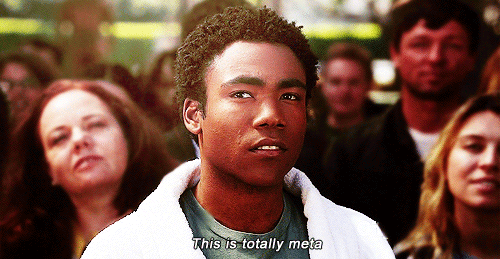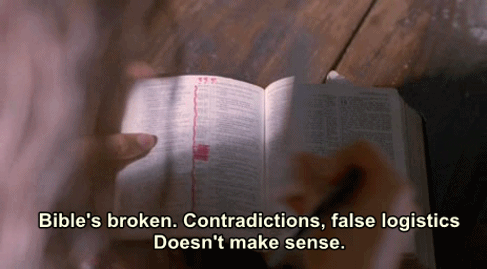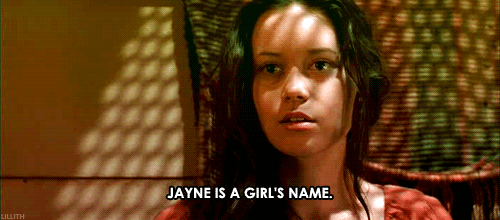Monday, August 12, 2013
Thursday, May 30, 2013
Moving Sale!
It's happening. As promised, I'm pulling up stakes and moving my blog. Today, I'm over there telling spooky stories and giving away books. Join me, won't you?
I'll post a few more reminders here before shutting down. So, this will be a multi-step farewell.
I'll post a few more reminders here before shutting down. So, this will be a multi-step farewell.
Friday, May 24, 2013
Introducing In-Site Blog & Critique Camp
I've been pondering things. Things about blogs and things about critique, and I've come to two change-inducing conclusions at once.
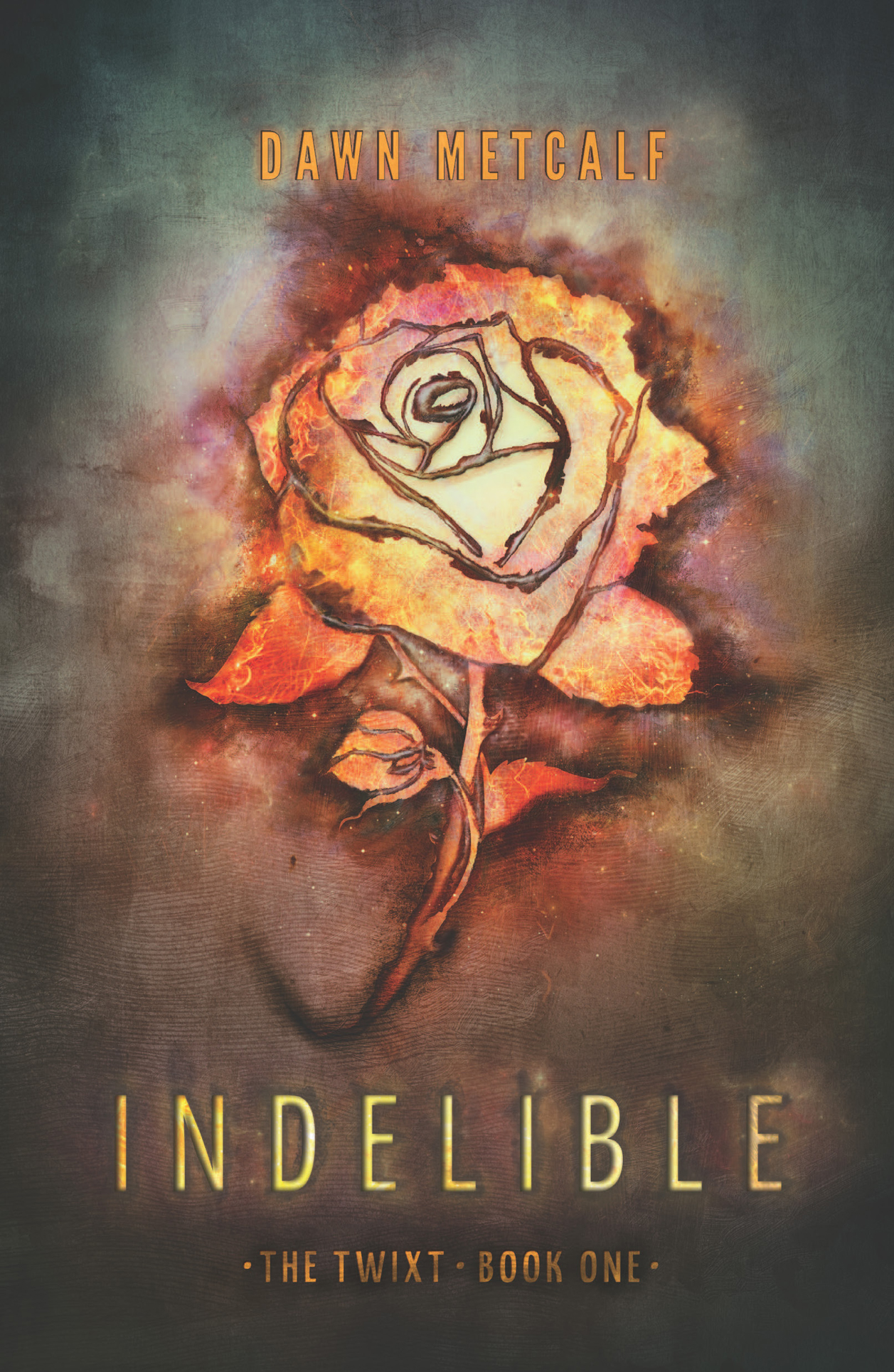

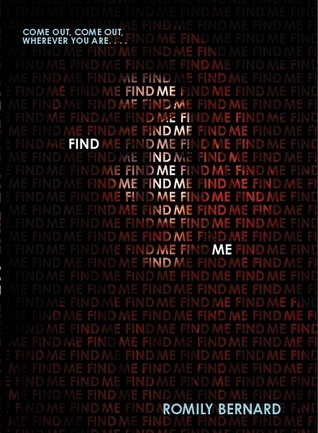
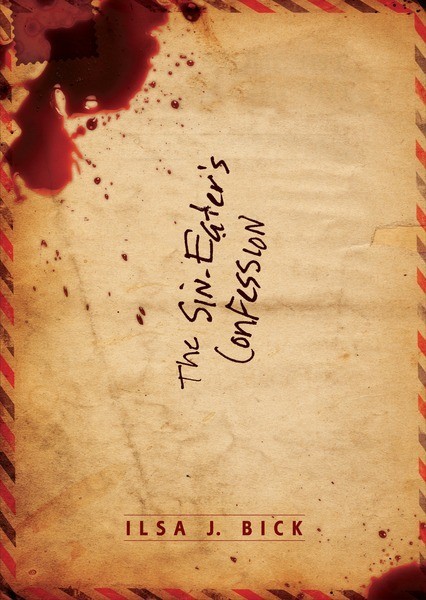
The first is that I'm moving out of blogger, away from my long-beloved LiveJournal, and into WordPress. Not only that, but this WP is available right inside my delicious little website. Now you can find everything I ever wanted to tell you about me in one convenient place. How's that for one-stop shopping?
The second is that Critique Camp went so well that I'm taking this show on the road! Which is to say, I'm now offering Crit Camp as a regular service. After several years of doing insane amounts of critique (anyone remember the Call Me Icarus project?), I've come to terms with the fact that it's something I love and I should just make it official. So here it is, Crit Camp!
To celebrate both of these things and entice you to shift gears with me and check out my new blog, I'll be hosting a number of giveaways over the next few weeks. Or maybe the next month. It depends on how long my stash lasts. I've got more than a few goodies you might be interested in. Frex:
- An ARC of Dawn Metcalf's INDELIBLE: The Twixt Book One
- A finished, signed copy of THE LOST SUN by Tessa Gratton
- An ARC of Romily Bernard's FIND ME
- A finished copy of THE SIN EATER'S CONFESSION by Ilsa J. Bick
- Bookmark swag from Sonia Gensler (THE DARK BETWEEN) and Julie Murphy (SIDE EFFECTS MAY VARY)
- And more things I haven't decided on yet




Don't those look delightful? Well. THEY ARE. Trust me on this. Also, with every book/package I giveaway, I'll throw in one free entry to Crit Camp.
So, long time readers (thank you!) and newcomers (welcome!), please join me for continuing adventures on my new blog!
Tuesday, May 21, 2013
Crit Course Wrap-up
(First. A note. I've made the decision to shift from Blogger to Wordpress. I'll post here a few more times, but if you'd like to continue following my exploits, please do so by either following my WordPress blog or my LiveJournal. Thanks!)
As requested, here's the run down of how my recent trial run of the critique crash course went. But first, let's all agree to call it Crit Camp from now on because critique crash course is a MOUTHFUL. Agreed? Agreed.
I ran two courses simultaneously. Each had 3 participants who all submitted roughly 5 pages of their manuscripts. We had a 1-hr introductory chat in which I offered an organized method of approaching critique and outlined what I wanted to see from them. Here's the nitty gritty:
The participants all seemed to walk away with a different (broader? more complicated? more pointed?) understanding of what critique can be, and I certainly saw immense improvement between the drafts of letters. So, I'm gonna go out on a limb and call this trial run a success.
I'll definitely be repeating the adventure. In fact, I already have ideas for how I'll improve the course next time around, so keep an eye on this space if you're interested. I have Plans.
As requested, here's the run down of how my recent trial run of the critique crash course went. But first, let's all agree to call it Crit Camp from now on because critique crash course is a MOUTHFUL. Agreed? Agreed.
I ran two courses simultaneously. Each had 3 participants who all submitted roughly 5 pages of their manuscripts. We had a 1-hr introductory chat in which I offered an organized method of approaching critique and outlined what I wanted to see from them. Here's the nitty gritty:
- everyone submitted 50 pages and received 50 page samples from the others in the group (100 total pages for them, 300 total for me);
- we took a week to read and draft crit letters, which were then submitted to me; I reviewed, critiqued, and returned those letters to the authors for revision (a total of 12 letters for me);
- the participants revised and resubmitted based on my comments;
- I reviewed the revised letters before releasing them to the group and made both revised and pre-revised letters available to all participants for review.
The participants all seemed to walk away with a different (broader? more complicated? more pointed?) understanding of what critique can be, and I certainly saw immense improvement between the drafts of letters. So, I'm gonna go out on a limb and call this trial run a success.
I'll definitely be repeating the adventure. In fact, I already have ideas for how I'll improve the course next time around, so keep an eye on this space if you're interested. I have Plans.
Wednesday, May 15, 2013
The Perspective of a Dandelion
It's spring. Which means T and I will engage in dandelion warfare for approximately 93 days.
I don't mean that we'll join forces and seek to cleanse our yard of them, I mean we will argue about them. We'll argue about whether or not they're a weed, whether or not they're pretty, and whether or not they deserve to exist. For 93 days.
It goes something like this....
 Me: UGH. Look at that field of dandelions.
Me: UGH. Look at that field of dandelions.T: Pretty!
Me: No. They're not.
T: Look at that yellow! They're like sunlight!
Me: They're not sunlight, they're weeds.
T: GRASS IS A WEED, TOO.
Me: But it's a useful one.
T: Being pretty is useful. Just ask Keanu Reeves. How do you think he ever got cast in anything.
I see the point. If I step far enough back from my adult experience of dandelions, I can remember the joy child-Natalie would have felt at the sight of a field of fluff balls. I can divorce my thoughts from how widely those seeds will disperse, how like a virus they'll encroach on my yard, how like a Kraken they'll attach to my soil with a death-firm grip and instead see their oppressive beauty...
Sometimes, I'm more successful than others.
But as I was prying those little beasts from my lawn one evening, I had some time to consider how radically our perspective changes our reality. If, like T, I was content to find the beauty in a lawn full of dandelions, I'd save myself an awful lot of sweat and toil. I might be content to let them rule my yard in yellow fury. But without that perspective, I rooted around in the dirt for hours like a madwoman. I changed the landscape of my lawn little by little until only a few bits of yellow remained.
I didn't eradicate them completely because when there were only a few left, they were suddenly refreshing and beautiful against dark green grass - a metaphor for survival rather than oppression.
Having just come through a rather involved edit and a test-run of my Critique Crash Course, the timing seemed appropriate.
(Obviously, I was going to relate this to writing, right?)
In my last round of edits I was charged with tightening my novel. In the course of doing so, I grappled with finding a balance between pretty and over-written. I asked my author friends, "What does it mean to over-write? How do I know if I'm doing it? Where I'm doing it? How do I fix it?"
As you can imagine, I got a variety of really good answers. They ranged from "avoid too much repetition" to "don't flood a scene with gorgeous prose because you can" to "be efficient."
At first, this was really hard. All of my words appeared firmly rooted in place. There was no disturbing them. They belonged because I'd been over the manuscript enough to KNOW they belonged.
Hadn't I?
It was hard to tell, so I gave it to a friend and asked her to demonstrate which words were weedy and which were holding down the soil of the story. What she returned to me were pages so devastated I almost didn't recognize them. My knee jerked. I didn't want to believe there was THIS much to shed. What was left? How could the leftover words possibly carry the weight of the story.
But once I'd recovered from the shock, I started to see what she'd done - how she was teasing the story to the front by tamping down the fluff. I was able to analyze my prose simply by virtue of having someone come in and point out the weeds I mistook for flowers.
This was a new sort of revision for me. Not something I was prepared to do on my own, but a good reminder of why I need people to look at the same thing I'm looking at and tell me what they see. Sometimes the way to achieve a new perspective is by climbing onto the shoulders of someone else.
So here's what dandelions taught me about writing: pretty can be a virus. Too much of it and a manuscript can drown in the relentless monotony of it. There's a trick in shifting your perspective from flower to weed, and for me it was as exciting as a free cappuccino.
In the end, I culled the manuscript by 7k. I changed the landscape of the novel so that the language wasn't so cluttered, so that the story got more sun, so that the important bits didn't have to compete for water.
But I left the dandelions that became flowers in the process.
Monday, April 8, 2013
[Crash Course] How to Crit like a Pro
I’m still getting tweets and emails about this crash course. So, let’s do this thing.
DISCLAIMER: I have never done this before. This will be an experiment. It could go swimmingly or just plain well. Either way, the first round will surely encounter bumps and hitches and I ask for your patience in advance.
I’m going to run this like a mini-workshop. It’ll be off-blog and I’ll keep numbers small on this first round, but if my guinea pigs love it, I’ll do it as long as there’s interest from all of you beautiful blog readers.
Here’s how it’ll work. We’ll do this in groups of three and we’ll start with a face-to-face conversation about critique. Everyone will turn in a writing sample and will receive a sample from the two others in the group. You’ll write a crit letter for each sample, send them to me, and I’ll give you crit on your crit.
(How meta is that?)
You will then revise your crit based on my feedback before sharing it with the group. Everyone will read all of the revised critique letters, including mine.
I’m thinking we’ll end with another face-to-face chat, so this is going to be an intense process both time-wise and energy-wise.
To participate, you must agree to/meet the following requirements:
DEADLINE FOR CONSIDERATION: 12pm CST on Saturday, April 13th!
I’ll do my best to pull together a group (or two) that seems well-matched and set up a start date. I’ll respond to everyone, though, so you will know if I’m tapping you to take part in round one.
Did I miss anything? If so, drop your questions in the comments.
If you have friends who might be interested, feel free to spread the word. I’m doing this because I think writing is exciting, I think critique is exciting, and I think it’s most exciting when we’re pushing each other to do better. This is about pushing in the most efficient way. ;)
Also, if you’re looking for my previous posts on critique, just follow the tag “how I crit.”
DISCLAIMER: I have never done this before. This will be an experiment. It could go swimmingly or just plain well. Either way, the first round will surely encounter bumps and hitches and I ask for your patience in advance.
I’m going to run this like a mini-workshop. It’ll be off-blog and I’ll keep numbers small on this first round, but if my guinea pigs love it, I’ll do it as long as there’s interest from all of you beautiful blog readers.
Here’s how it’ll work. We’ll do this in groups of three and we’ll start with a face-to-face conversation about critique. Everyone will turn in a writing sample and will receive a sample from the two others in the group. You’ll write a crit letter for each sample, send them to me, and I’ll give you crit on your crit.
(How meta is that?)
You will then revise your crit based on my feedback before sharing it with the group. Everyone will read all of the revised critique letters, including mine.
I’m thinking we’ll end with another face-to-face chat, so this is going to be an intense process both time-wise and energy-wise.
To participate, you must agree to/meet the following requirements:
- Have 50 pages or 15k words (whichever is shorter) to share for crit;
- Commit to reading 100 pages to crit within a week of the start of the crash course;
- Be able to commit several hours to preparing (writing, reading, and revising) critique letters;
- Be at least 18 years old (this is for legal reasons – if you’re a teen and you’re interested, please let me know!);
- Be generally groovy.
- Your name
- Title of your work in progress
- Genre (Adult, YA, MG – contemporary, historical, fantasy, sci-fi, horror, etc.)
- Pitch/Brief description of the work
- The first 5 pages attached as a word document
DEADLINE FOR CONSIDERATION: 12pm CST on Saturday, April 13th!
I’ll do my best to pull together a group (or two) that seems well-matched and set up a start date. I’ll respond to everyone, though, so you will know if I’m tapping you to take part in round one.
Did I miss anything? If so, drop your questions in the comments.
If you have friends who might be interested, feel free to spread the word. I’m doing this because I think writing is exciting, I think critique is exciting, and I think it’s most exciting when we’re pushing each other to do better. This is about pushing in the most efficient way. ;)
Also, if you’re looking for my previous posts on critique, just follow the tag “how I crit.”
Monday, April 1, 2013
Wanna sorta date?
I've had a request to continue the 'Let's Talk Critique' series with a post on behavior. I've got a list of quick tips on this including break-up tips and I'm happy to share them. And I will, but I'm also cooking up another crit-related idea and before I go too far down this path, I think it's wise to gauge interest.
Say I was to offer a crash course on how to give and receive critique like a pro. Say this crash course included a crit from me as well as other participants? Would you be interested? Would someone you know be interested?
Holler in the comments. Tweet me. Or otherwise let me know and I may just pull this together.
Say I was to offer a crash course on how to give and receive critique like a pro. Say this crash course included a crit from me as well as other participants? Would you be interested? Would someone you know be interested?
Holler in the comments. Tweet me. Or otherwise let me know and I may just pull this together.
Tuesday, March 26, 2013
Let's Talk Critique Pt 2
Welcome to part two of Let’s Talk Critique. This is where we’ll talk about “how” good crit partners do what they do. If you missed the “what,” check it out here.
There’s a lot of common wisdom out there about how a crit partner (cp) can go about critiquing without being a giant douchecanoe. This is good because there’s no certification process for learning how to crit. I'm certain my critique style is heavily influenced by having done an undergraduate degree in English Lit in which I was frequently asked to analyze capital-‘L’-Literature from a variety of perspectives (oh, Po-Mo, how I heart you). But I don't consider that adequate preparation for the work of thinking critically about something that's still in progress. It was just a starting point.
Most of the posts I’ve seen on the subject of crit revolve around the behavior of a good/bad cp, which easily accounts for half of what it takes to be a good cp. That’s the “partner” part of “critique partner,” and since that ground has been well and truly covered elsewhere, I’m going to continue the conversation by focusing on the “critique” part of “critique partner.”
As I work with my super stellar cps primarily via email, I'm focusing on crit-in-letter form. I can't really speak to the in-person dynamic of crit, but I imagine these still apply.
So! Here are Natalie's top 4 truths of making really good crit with action items and more Firefly gifs:
1. Be the best bad guy you can be.
We all know the sandwich method of critique: this is the good-crit-good school of critique. I think it bears repeating because pointing out the good can be challenging when you’re reading with a critical eye. But it IS important. Not because you need to make the author feel good (though, that’s part of it), but because this is frequently the hard part of a good critique.
It’s easy to look at a piece and find ways in which it could be better; it’s not always so easy to find its strengths especially in drafting stages. But finding the love is where you lay the groundwork of a good critique. If I’m going to tell you that your main character’s emotional arc is missing key beats and is therefore unrealized in the end, then I’d better also be able to tell you that the arc you’re striving for is visible precisely because you’ve established the starting point so well. It's easy to be a bad guy. It's tough to be a good bad guy.
Action item: Make your compliments/encouragements as insightful as your critiques.
2. Navigate the ‘I’.
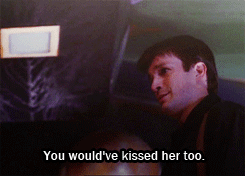 This is a tough one because most of us come to writing as readers, and as readers we're encouraged to identify with characters - or, at least, that's what we learn in school. But! In the case of crit, you're not a reader, you're a critiquer, and what you would do is therefor irrelevant.
This is a tough one because most of us come to writing as readers, and as readers we're encouraged to identify with characters - or, at least, that's what we learn in school. But! In the case of crit, you're not a reader, you're a critiquer, and what you would do is therefor irrelevant.
Okay. Maybe not totally irrelevant, but it should probably take a backseat to your analysis of the work. If your gut reaction to something in the text is to argue that it's not believable because you wouldn't behave as the main character did, there's probably a reason, but it doesn't have anything to do with you.
For example. Let's say you were critiquing for me and I gave you a piece about a vampire slaying space cowboy with the ability to download personalities like software and maintain quippy dialogue throughout. And let's say there was a scene in which said vampire slaying space cowboy hides under her bed to escape an invasion of zombies.
Instead of saying, "if I were a vampire slaying space cowboy with the ability to download whatever personality I wanted, I wouldn't hide beneath my bed from something as mundane as zombies," you might practice removing yourself from the equation and consider why that's your reaction. In this case, it might be because I hadn't properly illuminated the fact that this vampire slaying space cowboy had a horrific experience with zombies in her childhood and lacks the confidence needed to meet them face on.
Action item: Read your crit letter for 'I' statements and consider how to restate them in a way that removes you from the picture. Be creative!
3. Aim before you fire.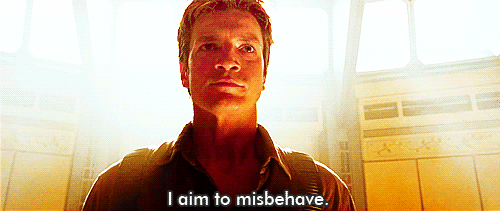
Once the critical glasses are on, it can be difficult to moderate them. But! Too much of a good thing is like the 4th Indiana Jones movie - people only really remember the first three with fondness.
It's easy to get swept up in the excitement of a good crit. You can see all the things! You can be useful! And brilliant! And point out the universe of problems!
Well. Don't.
This is where it's helpful to know your terrain and pick your battles wisely. This is also a part of critique that is hugely flexible and will shift depending on your relationship with the writer.
Speaking in general terms, a well-aimed crit is worth more than an exhaustive one. If you see a wealth of trouble in a manuscript, it may be best to address only the most salient issues - for example, you might prioritize the character arc over addressing voice, or major plot issues over problems with smaller scenes. In these cases, the bone saw is more useful than the scalpel. Remember: the elements of storytelling are connected and addressing one is, in some ways, addressing all.
Action item: Practice condensing critique notes or demonstrating relationships between them.
4. Be clear. Be concise. Be nice.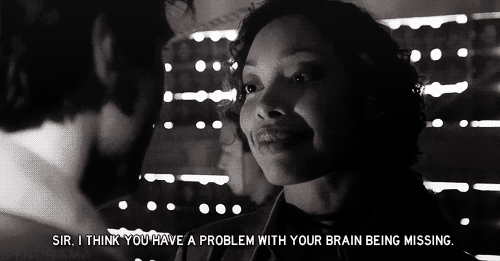
Revise your crit letters. Especially in the early stages of working with a new partner, precision is kindness. Take the time to organize your thoughts and make them incisive without abandoning niceties - it's possible to say hard things without being mean, but it definitely takes practice.
Similarly, crit letters aren't soapboxes; there's no need to write a treatise on the inherent fault of zombie/vampire/werewolf mythologies (see aforementioned comment about behaving like a douchecanoe). I promise you this is a surefire way to lose the goodwill of your critique-ee.
Trust that the author knows that zombies/vampires/werewolves can't exist (well....except for zombies), and focus instead on why in the context of their manuscript, the mythology is weak. Which is to say, anyone can tell me my zombies are improbable, but a good cp will tell me why my zombies are unbelievable. A great cp will do that with a single statement and a smile.
Action item: Revise, revise, revise your crit letters just as you did the manuscript.
The thing these all have in common is creativity. We don't usually think about crit as being creative. Critique is the necessarily academic component of writing a novel. It's strict, the disciplinarian of daydreams. It reigns us in and cools us down and counters impossible yes's with irritatingly realistic no's. But. (You knew there was a but.) BUT. (But did you know there were two?) A really good critique does all of that in a way that leaves you burning to try again - to be better than you were last time. A really good critique isn't a monster waiting to swallow your bones, it's the whetting stone there to sharpen your sword.
So, there you have it. How Natalie approaches crit. Again, this has little to do with behaving like a good cp. Behavior is another boat. Or another post if you're interested.
There’s a lot of common wisdom out there about how a crit partner (cp) can go about critiquing without being a giant douchecanoe. This is good because there’s no certification process for learning how to crit. I'm certain my critique style is heavily influenced by having done an undergraduate degree in English Lit in which I was frequently asked to analyze capital-‘L’-Literature from a variety of perspectives (oh, Po-Mo, how I heart you). But I don't consider that adequate preparation for the work of thinking critically about something that's still in progress. It was just a starting point.
Most of the posts I’ve seen on the subject of crit revolve around the behavior of a good/bad cp, which easily accounts for half of what it takes to be a good cp. That’s the “partner” part of “critique partner,” and since that ground has been well and truly covered elsewhere, I’m going to continue the conversation by focusing on the “critique” part of “critique partner.”
As I work with my super stellar cps primarily via email, I'm focusing on crit-in-letter form. I can't really speak to the in-person dynamic of crit, but I imagine these still apply.
So! Here are Natalie's top 4 truths of making really good crit with action items and more Firefly gifs:
1. Be the best bad guy you can be.

We all know the sandwich method of critique: this is the good-crit-good school of critique. I think it bears repeating because pointing out the good can be challenging when you’re reading with a critical eye. But it IS important. Not because you need to make the author feel good (though, that’s part of it), but because this is frequently the hard part of a good critique.
It’s easy to look at a piece and find ways in which it could be better; it’s not always so easy to find its strengths especially in drafting stages. But finding the love is where you lay the groundwork of a good critique. If I’m going to tell you that your main character’s emotional arc is missing key beats and is therefore unrealized in the end, then I’d better also be able to tell you that the arc you’re striving for is visible precisely because you’ve established the starting point so well. It's easy to be a bad guy. It's tough to be a good bad guy.
Action item: Make your compliments/encouragements as insightful as your critiques.
2. Navigate the ‘I’.
 This is a tough one because most of us come to writing as readers, and as readers we're encouraged to identify with characters - or, at least, that's what we learn in school. But! In the case of crit, you're not a reader, you're a critiquer, and what you would do is therefor irrelevant.
This is a tough one because most of us come to writing as readers, and as readers we're encouraged to identify with characters - or, at least, that's what we learn in school. But! In the case of crit, you're not a reader, you're a critiquer, and what you would do is therefor irrelevant.
Okay. Maybe not totally irrelevant, but it should probably take a backseat to your analysis of the work. If your gut reaction to something in the text is to argue that it's not believable because you wouldn't behave as the main character did, there's probably a reason, but it doesn't have anything to do with you.
For example. Let's say you were critiquing for me and I gave you a piece about a vampire slaying space cowboy with the ability to download personalities like software and maintain quippy dialogue throughout. And let's say there was a scene in which said vampire slaying space cowboy hides under her bed to escape an invasion of zombies.
Instead of saying, "if I were a vampire slaying space cowboy with the ability to download whatever personality I wanted, I wouldn't hide beneath my bed from something as mundane as zombies," you might practice removing yourself from the equation and consider why that's your reaction. In this case, it might be because I hadn't properly illuminated the fact that this vampire slaying space cowboy had a horrific experience with zombies in her childhood and lacks the confidence needed to meet them face on.
Action item: Read your crit letter for 'I' statements and consider how to restate them in a way that removes you from the picture. Be creative!
3. Aim before you fire.

Once the critical glasses are on, it can be difficult to moderate them. But! Too much of a good thing is like the 4th Indiana Jones movie - people only really remember the first three with fondness.
It's easy to get swept up in the excitement of a good crit. You can see all the things! You can be useful! And brilliant! And point out the universe of problems!
Well. Don't.
This is where it's helpful to know your terrain and pick your battles wisely. This is also a part of critique that is hugely flexible and will shift depending on your relationship with the writer.
Speaking in general terms, a well-aimed crit is worth more than an exhaustive one. If you see a wealth of trouble in a manuscript, it may be best to address only the most salient issues - for example, you might prioritize the character arc over addressing voice, or major plot issues over problems with smaller scenes. In these cases, the bone saw is more useful than the scalpel. Remember: the elements of storytelling are connected and addressing one is, in some ways, addressing all.
Action item: Practice condensing critique notes or demonstrating relationships between them.
4. Be clear. Be concise. Be nice.

Revise your crit letters. Especially in the early stages of working with a new partner, precision is kindness. Take the time to organize your thoughts and make them incisive without abandoning niceties - it's possible to say hard things without being mean, but it definitely takes practice.
Similarly, crit letters aren't soapboxes; there's no need to write a treatise on the inherent fault of zombie/vampire/werewolf mythologies (see aforementioned comment about behaving like a douchecanoe). I promise you this is a surefire way to lose the goodwill of your critique-ee.
Trust that the author knows that zombies/vampires/werewolves can't exist (well....except for zombies), and focus instead on why in the context of their manuscript, the mythology is weak. Which is to say, anyone can tell me my zombies are improbable, but a good cp will tell me why my zombies are unbelievable. A great cp will do that with a single statement and a smile.
Action item: Revise, revise, revise your crit letters just as you did the manuscript.
The thing these all have in common is creativity. We don't usually think about crit as being creative. Critique is the necessarily academic component of writing a novel. It's strict, the disciplinarian of daydreams. It reigns us in and cools us down and counters impossible yes's with irritatingly realistic no's. But. (You knew there was a but.) BUT. (But did you know there were two?) A really good critique does all of that in a way that leaves you burning to try again - to be better than you were last time. A really good critique isn't a monster waiting to swallow your bones, it's the whetting stone there to sharpen your sword.
So, there you have it. How Natalie approaches crit. Again, this has little to do with behaving like a good cp. Behavior is another boat. Or another post if you're interested.
Friday, March 22, 2013
Let's Talk Critique Pt 1
In the past 6 months, I've had the opportunity to critique manuscripts for three people I've never worked with before. I always warn people that my critiques can be rough if you're not very familiar with critique, and these were no exception. To illustrate, each of these crit letters was 2k and over.
The interesting thing about these, and the reason I'm posting about it, is that they were for writers at very different stages of the process. One was just starting out, one a seasoned writer making strides toward publication, and one a debut author. In each of these cases, comments were made about my critique style and how I learned it. Which got me thinking that this might be a topic more people are interested in.
Fast forward to this week, when Maggie Stiefvater posted her CP Love Connection and it seems perfectly timely. As an aside, I highly recommend you start there if you're looking for a creative hook up. And remember to check the postings on her mirrored blogs.
So, let's talk about critique and what it means to be a partner. This will be a post in two parts. Part one (that's this part) on the "what" of crit; part two on the "how." (Part three if I think of something else).
I know that there are people who have elaborate hierarchies of the various sets and subsets of critique partners. People talk about Alpha readers and Beta readers and for all I know they have Gamma, Delta, Epsilon, and Zeta readers, too. But I'm going to break things down into the three levels reflected most precisely in the publishing process: Editor, Line Editor, Copy Editor. They will all serve you well, but in very different ways. And please know that though I'm speaking in very general terms, I'm talking about my own experience in the wild and sundry world of critique.
What does an editor do?
I'm feeling bullet-y today. Let's use those.
What does a line editor do?
What does a copy editor do?
To be clear, I think a CP can do all of these levels of editing, but it's the first level that is the most crucial. You wrote a book, which makes you brilliant, but a CP who can point to the major plot hole in your work is just as brilliant. A CP who can point to the plot hole and also how the fix for that hole already established in the manuscript well, they're the best in the 'verse. If your CP only gives you line notes and copy edits, you don't actually have a CP.
So now that I know what I'm looking for, how do I find a good critique partner?
Finding a good CP can be tough. Having swapped manuscripts with dozens of people, I know that being in the trenches can be so frustrating you begin to question the worth of the quest. But don't give up! There's no training for this job. As with writing, many of us learn by doing, and that means that every time you swap a manuscript, you are both learning and teaching someone how to give critique.
My best advice is to keep swapping - establishing rules such as those in Maggie's post before you trade - with an eye for those who can critique on the editor level.
There are several resources online that will help you connect with similarly situated writers. I'll list more below, but if you know of others, please drop them in the comments. You can also reach out to local chapters of SCBWI or your library to see what crit groups are active in your area, but I've had the best success online.
Resources
In addition to Maggie's connection, the following are great places to cruise for creatives:
The interesting thing about these, and the reason I'm posting about it, is that they were for writers at very different stages of the process. One was just starting out, one a seasoned writer making strides toward publication, and one a debut author. In each of these cases, comments were made about my critique style and how I learned it. Which got me thinking that this might be a topic more people are interested in.
Fast forward to this week, when Maggie Stiefvater posted her CP Love Connection and it seems perfectly timely. As an aside, I highly recommend you start there if you're looking for a creative hook up. And remember to check the postings on her mirrored blogs.
So, let's talk about critique and what it means to be a partner. This will be a post in two parts. Part one (that's this part) on the "what" of crit; part two on the "how." (Part three if I think of something else).
I know that there are people who have elaborate hierarchies of the various sets and subsets of critique partners. People talk about Alpha readers and Beta readers and for all I know they have Gamma, Delta, Epsilon, and Zeta readers, too. But I'm going to break things down into the three levels reflected most precisely in the publishing process: Editor, Line Editor, Copy Editor. They will all serve you well, but in very different ways. And please know that though I'm speaking in very general terms, I'm talking about my own experience in the wild and sundry world of critique.
What does an editor do?
I'm feeling bullet-y today. Let's use those.
- Read for over-arching consistency and integrity in the story. This is the big picture, so big, you're in space looking down at the earth, discovering how the continent you want to build will fit in the vast scheme of things. In other words, plot and character arcs - do they work? Are they realized?
- Give attention to the movements within a story and transitions between them. This is probably the medium-sized picture, from the earth's atmosphere on a clear day where you can see the topography of this new continent. In other words, subplots, setting, and tone - are they adding to the story?
- Be aware of the momentum of the story. This is the most focused view; you're on the ground navigating the path you charted from atmo. In other words, pacing, pacing, pacing - which scenes drag at the story? What quiet moments are missing?
What does a line editor do?
- Voice and point of view. Are they consistent throughout?
- Word choice and sentence structure. Do the word choices and sentences relate to specific character arcs? Is pacing consistent with sentence structure?
- Pacing and rhythm within the text. Should you consider condensing a paragraph into one or two lines? Do you over-use pronouns or specific sentence type?
What does a copy editor do?
- Read for consistency in descriptions. Do your characters have the same hair color throughout? Did you spell the name of the town consistently? Did your protagonists mother drive a Prius at the beginning and an SUV at the end?
- Find problems with internal logic. Can your character actually cross a certain distance in the time they say they can?
- Words, words, words. Grammar and style (both the author's and the publisher's). Do you love the Oxford comma? Always spell gray with an 'e'?
To be clear, I think a CP can do all of these levels of editing, but it's the first level that is the most crucial. You wrote a book, which makes you brilliant, but a CP who can point to the major plot hole in your work is just as brilliant. A CP who can point to the plot hole and also how the fix for that hole already established in the manuscript well, they're the best in the 'verse. If your CP only gives you line notes and copy edits, you don't actually have a CP.
So now that I know what I'm looking for, how do I find a good critique partner?
Finding a good CP can be tough. Having swapped manuscripts with dozens of people, I know that being in the trenches can be so frustrating you begin to question the worth of the quest. But don't give up! There's no training for this job. As with writing, many of us learn by doing, and that means that every time you swap a manuscript, you are both learning and teaching someone how to give critique.
My best advice is to keep swapping - establishing rules such as those in Maggie's post before you trade - with an eye for those who can critique on the editor level.
There are several resources online that will help you connect with similarly situated writers. I'll list more below, but if you know of others, please drop them in the comments. You can also reach out to local chapters of SCBWI or your library to see what crit groups are active in your area, but I've had the best success online.
Resources
In addition to Maggie's connection, the following are great places to cruise for creatives:
- VerlaKay BlueBoards (primarily aimed at children's book writers)
- CP Seek (which I have no personal experience with, but hear good things about)
- Ladies Who Critique
- Write On Con's Critique Match Up
Tuesday, March 19, 2013
Hello! My Name is Natalie.
It's been so long, I'm afraid you've forgotten my face. Allow me to re-introduce myself. My name is Natalie and we've met, but it was last year and my hair was probably a different color....
I haven't been posting. There are reasons - 2012 went out with an apocalyptic bang and 2013 entered similarly - but I've not forgotten my dear blog. Consider this my reentry to the blogosphere.
Here's is the quick update of what I've been up to:

More soon. Ciao for now.
I haven't been posting. There are reasons - 2012 went out with an apocalyptic bang and 2013 entered similarly - but I've not forgotten my dear blog. Consider this my reentry to the blogosphere.
Here's is the quick update of what I've been up to:
- I've teamed up with a diverse group of debuting YA authors and we've just launched our blog. We are The Fourteenery - 14 YA Authors Debuting in 2014. (Obligatory prize post here). This is a group of women I've been working with for several months and I'm excited and delighted to be engaged in this collaborative venture.
- Tumblr! I love it. And I'm Obviously Parker (obviously).
- The Official 2014 Debut Young Adult and Middle Grade author group has launched! If you'd like the bird's eye view of what's coming down those roads, check out the OneFour KidLit blog and/or Twitter feed.
- Texas! For the first time in my life, I visited the great state of Texas for a writing retreat. 21 writers, 5 days, 2 houses, 1 river. As you can imagine, it was as exhausting as it was recharging.

More soon. Ciao for now.
Sunday, January 6, 2013
How the Ocean Trapped Me
This year for the holiday, my family decided it would be best to rent a beach house in order to accommodate everyone with their own bedroom -- such is the way of everyone being an adult and picky. It was a good idea. It was my idea. And we quickly zeroed in on Dauphin Island as the perfect destination. Not only that, but we narrowed our search down even further to a house at the far western tip of that island where nothing but shrubs and grass grow and all is sand and water.
(I'm not being dramatic. That's all totally serious and true.)
Background: Dauphin Island is a barrier island off the coast of Mobile, Alabama. It's not too far from our home in Gulfport, Mississippi, nor is it very large. As islands go, it's barely there (6 square miles!), but it's historically significant as being a few hundred yards from Admiral Farragut when he spoke the words, "Damn the torpedoes, full speed ahead!" during the battle of Mobile Bay in the Civil War.
Well, renting houses online is an exciting thing. Websites and photos give you a general idea of the place you're about to spend quality time in, but you can never really know what it'll be like until you're pulling your car onto a sand-and-pebble driveway in front of a up-on-stilts-house while the ocean laps at the shore just feet away. There's just no real substitute for stepping out onto damp sand and looking South to the Gulf of Mexico, then North to Mobile bay - both close enough to splash. No real way to prepare for what it might mean should a storm roll in while you're living in this up-on-stilts-house on an island with one road down the center...
As you've probably guessed, this is exactly what happened. On Christmas day, winter storm Euclid tore across the country and in the south, he called to the seas. "Rise up! Rise up!" He cried. "Higher! Louder! Steal that driveway! SHAKE THAT HOUSE!"
It was insane. The house shook every time the waves crashed against the stilts (a-ha! this is why they're on stilts!), which might have been lulling had I not been wondering just how deep those stilts were buried in the earth. I hoped they were all in the bedrock, but suspected not. By 10:00pm, the ocean had swallowed the bottom step leading to the driveway, turning the sand to muck, and the waves were nearing the road.
That's about when we stopped looking. We were in it for the long haul no matter how high the seas got. The tornado warnings kept going, but houses on stilts HAVE NO BASEMENTS. So we decided to get some sleep, and hope for the best.
Obviously, I'm still here, but the next morning was...interesting. I've captured some of the aftermath for you...
Thanks to the realtor, we had enough warning to move our cars across the street, otherwise, my trusty vehicle might still be in Alabama...or on its way to Costa Rica.
We were stuck for two days and just as the water receded enough to get our cars back in the driveway, another storm rolled in and it started all over again.
Hope your holiday was a little less eventful and ten times more safe than mine.
(All that said, I would totally stay in a up-on-stilts-house again. Just....in May or June.)
(I'm not being dramatic. That's all totally serious and true.)
Background: Dauphin Island is a barrier island off the coast of Mobile, Alabama. It's not too far from our home in Gulfport, Mississippi, nor is it very large. As islands go, it's barely there (6 square miles!), but it's historically significant as being a few hundred yards from Admiral Farragut when he spoke the words, "Damn the torpedoes, full speed ahead!" during the battle of Mobile Bay in the Civil War.
Well, renting houses online is an exciting thing. Websites and photos give you a general idea of the place you're about to spend quality time in, but you can never really know what it'll be like until you're pulling your car onto a sand-and-pebble driveway in front of a up-on-stilts-house while the ocean laps at the shore just feet away. There's just no real substitute for stepping out onto damp sand and looking South to the Gulf of Mexico, then North to Mobile bay - both close enough to splash. No real way to prepare for what it might mean should a storm roll in while you're living in this up-on-stilts-house on an island with one road down the center...
As you've probably guessed, this is exactly what happened. On Christmas day, winter storm Euclid tore across the country and in the south, he called to the seas. "Rise up! Rise up!" He cried. "Higher! Louder! Steal that driveway! SHAKE THAT HOUSE!"
It was insane. The house shook every time the waves crashed against the stilts (a-ha! this is why they're on stilts!), which might have been lulling had I not been wondering just how deep those stilts were buried in the earth. I hoped they were all in the bedrock, but suspected not. By 10:00pm, the ocean had swallowed the bottom step leading to the driveway, turning the sand to muck, and the waves were nearing the road.
That's about when we stopped looking. We were in it for the long haul no matter how high the seas got. The tornado warnings kept going, but houses on stilts HAVE NO BASEMENTS. So we decided to get some sleep, and hope for the best.
Obviously, I'm still here, but the next morning was...interesting. I've captured some of the aftermath for you...
Thanks to the realtor, we had enough warning to move our cars across the street, otherwise, my trusty vehicle might still be in Alabama...or on its way to Costa Rica.
We were stuck for two days and just as the water receded enough to get our cars back in the driveway, another storm rolled in and it started all over again.
Hope your holiday was a little less eventful and ten times more safe than mine.
(All that said, I would totally stay in a up-on-stilts-house again. Just....in May or June.)
Subscribe to:
Posts (Atom)

